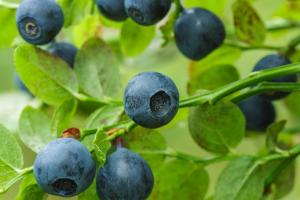Search Content
Displaying results 141 - 160 of 4920
Fixing leaks and installing a few inexpensive water-saving devices in your home could save up to 20,000 gallons of water each year.If you use utility or county water, your efforts could cut your monthly water and sewer bill in half. Unless your house was built after 1995, you probably have pre-conservation era plumbing that guzzles water. Fixing leaks and replacing old plumbing fixtures with water-saving models are two easy ways to conserve water and save money at the same…
Your Questions Answered
December 2019
Florida’s climate makes it ideal for growing a wide variety of crops, which makes the state’s agricultural industry one of the strongest in the country. The Southwest Florida Water Management District (District) believes working with the agricultural community to conserve water through our Facilitating Agricultural Resource Management Systems or FARMS program is essential to help ensure future water supplies.…
December 2024Q: What is FARMS?A: The Facilitating Agricultural Resource Management Systems, or FARMS program for short, is designed to serve as an incentive to the agricultural community to promote water quantity, water quality and natural systems BMPs to conserve groundwater use and protect water quality in the springs. The program is an agricultural cost-share reimbursement program that reduces groundwater withdrawals from the Upper…
April 2024Q: What is Florida-Friendly Landscaping™? A: Florida-Friendly Landscaping™ is a set of nine guiding principles which help protect natural resources and preserve Florida’s unique beauty. A Florida-friendly landscape is beautiful yet saves water and protects the environment too.Q: What are the nine guiding principles of Florida-Friendly Landscaping™? A: The nine guiding principles of Florida-Friendly…
June 2025Q: What are seagrasses? A: Seagrasses are flowering plants that have leaves, flowers, seeds, and roots. Unlike land plants, seagrasses do not have strong stems to hold themselves up. Instead, they are supported by the buoyancy of the water surrounding them. Another unique characteristic of seagrasses is that they are “halophytes,” meaning they only grow in saltwater. Of the…
Your Questions Answered November 2020Q: What are seagrasses? A: Seagrasses are flowering plants that colonized the ocean some 70 to 100 million years ago. Seagrasses have leaves, flowers, seeds and roots. Unlike land plants, seagrasses do not have strong stems to hold themselves up. Instead they are supported by the buoyancy of the water surrounding them. Another unique characteristic of…
August 2023Q: What is FARMS?A: The Facilitating Agricultural Resource Management Systems, or FARMS program for short, is designed to serve as an incentive to the agricultural community to promote water quantity, water quality and natural systems BMPs to conserve groundwater use and promote resource sustainability. The program is an agricultural cost-share reimbursement program that reduces groundwater withdrawals from the Upper Floridan…
The Mini-FARMS Program promotes agricultural water quality and water quantity best management practices (BMPs) and provides overall water resource benefits to agriculture properties. The Mini-FARMS Program works with and provides a mechanism for enrollment in the Florida Department of Agriculture and Consumer Services (FDACS) adopted agricultural BMPs program, through a Notice of Intent (NOI) to implement BMPs. Through the Mini-FARMS Program, the District will reimburse…
Your Questions Answered
January 2020
The Weeki Wachee River has been a popular site for recreational activities for many years. Recently, both public and private stakeholders agreed to take a closer look at what steps should be taken now to ensure the waterway is protected for years to come. Randy Smith, Natural Systems & Restoration Bureau Chief for the Southwest Florida Water Management District, explains the results of the recently…
April 2025Q: What is a spring?A: A spring occurs when groundwater that is under pressure flows through natural cracks in the aquifer and creates a natural opening in the ground. The pressure causes the water to flow from the aquifer to the earth’s surface. Our groundwater is the result of seasonal rainfall that soaks into the ground and into the aquifer. Springs can occur as an individual vent but more often as many…
Your Questions Answered
October 2020
If you received your property tax assessments recently, you may have noticed a line item from the Southwest Florida Water Management District (District.) The District manages the water resources through a variety of activities that support water supply, water quality, flood protection and natural systems. The Southwest Florida Water Management District’s Budget Manager Mike Cacioppo explains how your tax dollars…
Learn From the Experts
Through the Speakers Bureau, professional staff share their knowledge and expertise with a wide variety of audiences. Programs are presented at no charge within the District’s 16-county area.
Topics
Some of the most frequently requested topics are:
“Get Outside!”
The District and its partners acquire conservation lands to protect the region’s water…
July 2024Q: What is an aquifer?A: An aquifer is a body of underground rock and/or sediment that stores water. The groundwater within an aquifer can fill the spaces between grains of sand and gravel, or it can fill the cracks and fissures in solid rock.Q: Are there different types of aquifers?A: In west-central Florida the groundwater system is comprised of three main aquifer units; the surficial aquifer, the…
May 2023
Q: What does the District do to prepare for hurricane season?
A: Year-round, the District operates 84 water control structures in its 16-county area. These structures assist with flood protection, manage lake water levels and prevent saltwater from flowing up freshwater streams and creeks. To prepare for hurricane season, staff conduct annual hurricane readiness checks of all the District’s structures to ensure they…
Your Questions Answered
May 2022
Q: What does the District do to prepare for hurricane season?
A: Year-round, the District operates 85 water-control structures in its 16-county area. These structures assist with flood protection, manage lake water levels and prevent saltwater from flowing up freshwater streams and creeks. To prepare for hurricane season, staff conduct annual hurricane readiness checks of all the District’s…
March 2024Q: What is a spring?A: A spring occurs when groundwater that is under pressure flows through natural cracks in the aquifer and creates a natural opening in the ground. The pressure causes the water to flow from the aquifer to the earth’s surface. Our groundwater is the result of seasonal rainfall that soaks into the ground and into the aquifer. Springs can occur as an individual vent but more often as many…
March 2023
Q: Why is it important to use best practices when visiting rivers and springs?
A: The District has found direct links between river recreational use and environmental damage. For example, visitors leaving kayaks while on the river have trampled vegetation and eroded riverbanks and sand point bars. Also, numerous trees have been damaged from climbing and rope swinging. Over time, these actions can have negative long-term…
October 2023Q: What kind of recreation opportunities does the District offer?A: There are thousands of acres of recreational lands throughout the District and access to most of them is free to visitors. If you are into biking, birding, boating, camping, canoeing and paddling, equestrian activities, fishing, hiking or hunting, there’s something for everyone on the nearly 70 properties. Several District properties offer picnic facilities, and…



